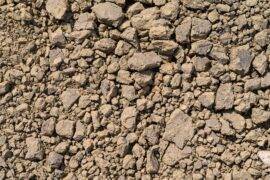Last year I worked hard to landscape my side yard, which involved creating a gravel garden. I used a weed-blocking cloth, complete with cut holes for the plants. I dug holes for the greenery and added low-maintenance selections such as blue agave and cactus. I bought and transported the gravel, unloaded it and scattered it. And then after the first big rain of the season, it became clear that the slope of our yard was a problem in terms of drainage (we hadn’t lived in the house long enough for me to foresee this issue). The professionals had to come in and dig up the garden, regrade the yard and re-create the gravel garden that I’d worked so hard to complete on my own.
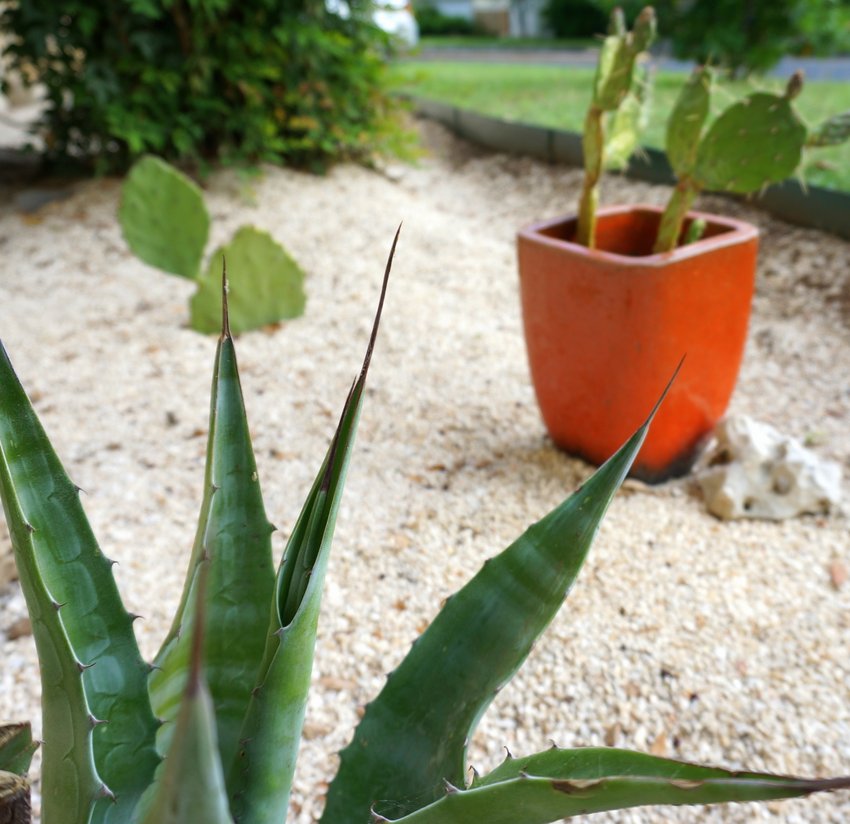
It felt like a major setback, but I was relieved that landscaping experts were overseeing the design of the yard. It was Kate’s gravel garden 2.0, complete with metal edging! Surely this outdoor space would be no-maintenance now that a better weed barrier fabric was involved. Guess what? There’s no such thing as a no-maintenance yard! Today’s post focuses on the art of maintaining a gravel garden, complete with helpful tips and realistic pointers for crafting a gorgeous modern landscape.
Common Challenges in Gravel Gardens
There are certain issues that go hand-in-hand with gravel gardens, even low-maintenance ones. Here are a few of them:
1. Stray Leaves
Unless your gravel garden is far from neighboring trees, stray leaves will find their way to the rocks. How do you deal with these intruders?Stay tuned for a list of easy solutions for common gravel garden challenges later in the post!
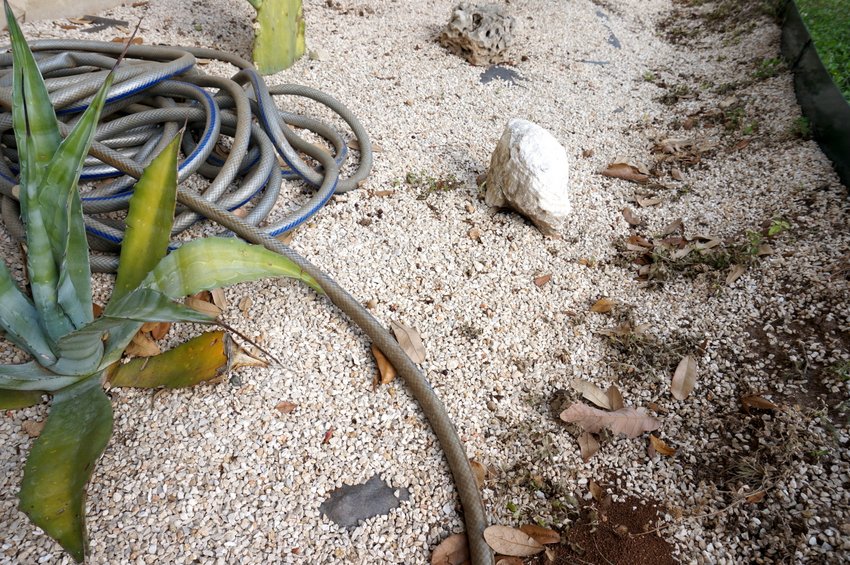
2. Weeds
Even with a weed barrier cloth, unwanted greenery may rear its ugly head. Pulling weeds isn’t fun, but it will help beautify your gravel garden.
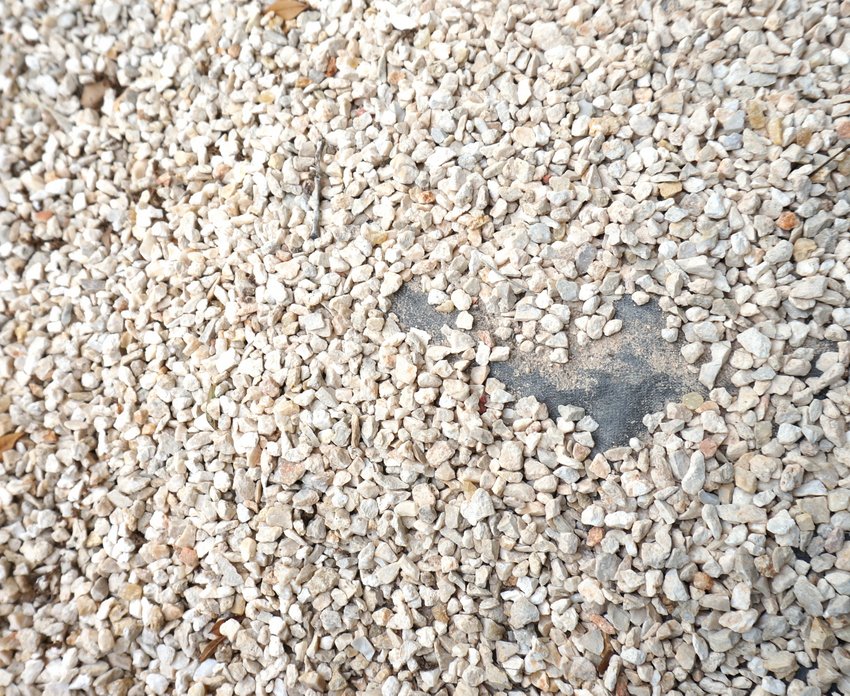
3. Uneven Gravel
Over time, gravel may expose the ground (or weed barrier fabric) underneath. Plus, if you walk through the garden from time to time, your feet can kick gravel out of place.
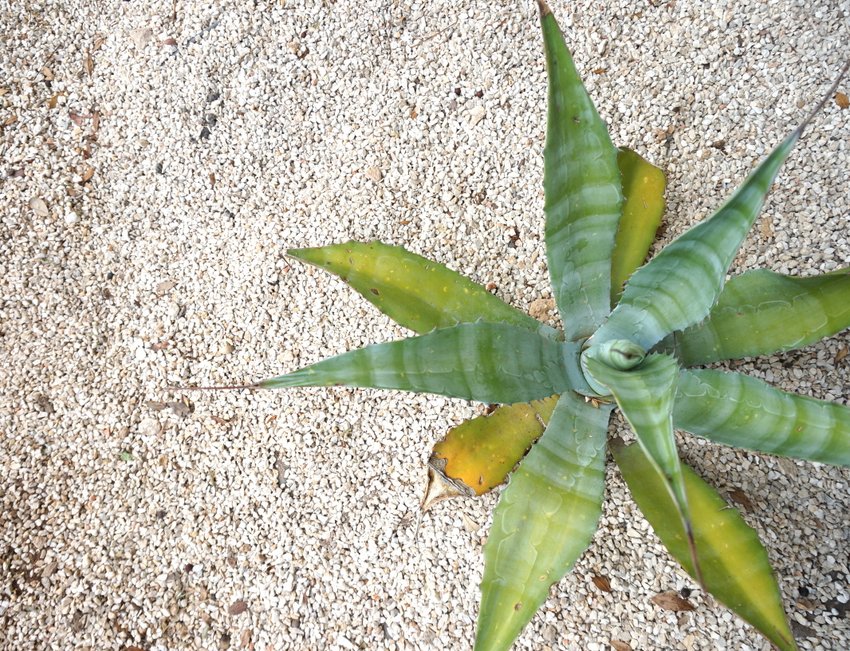
4. Plant Issues
Yes, even a low-maintenance garden has its share of plant problems. As you can see in the images above and below, my blue agave is anything but blue these days. Yellowing plants can be a sign of several issues from too much water to too much sun. I’m also starting to wonder if the weed barrier cloth is depriving my plants of valuable nutrients or messing with the roots. Hmm…. Bonus points if you can spot the stray wooden plank in the photo below. Not sure where that came from!
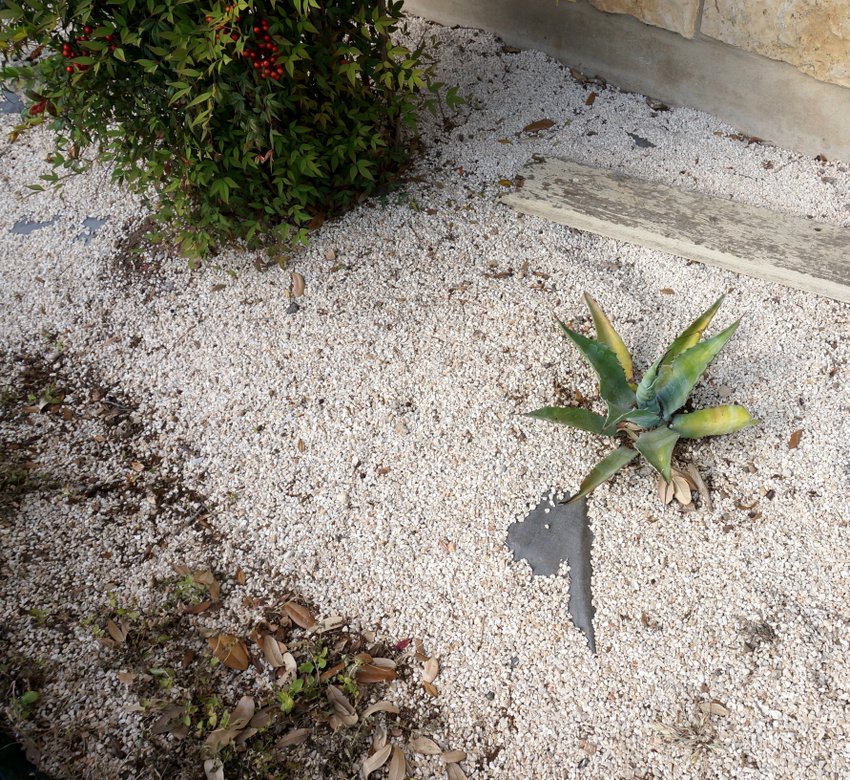
Easy Gravel Garden Maintenance Tips
Below you’ll find simple tips for keeping your gravel garden in check…
Tip #1: Use a leaf blower and a rake to remove stray leaves from the gravel.
If you do use a leaf blower, handle it with care. It may kick up some gravel in the process, so you’ll want to put it on a low setting and cover your eyes with protective goggles. I found this article to be helpful in terms of advice when it comes to removing leaves from gravel. You can even put on some gloves and pick out large clumps of leaves and other debris with your hands. During leaf-heavy times of the year (such as spring when the oak trees are shedding their leaves and pollen), try not to stress too much about your garden looking perfect. More on resisting perfection later!
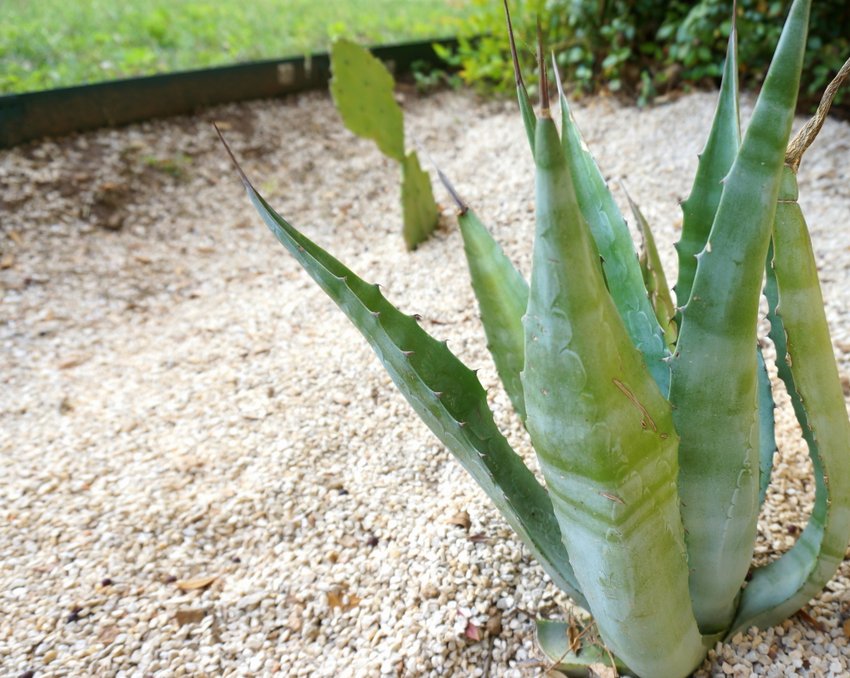
Tip #2: Water your plants as needed, and find an out-of-the-way spot for your garden hose.
Many popular gravel garden plants require little watering, but at certain times of the year, water may be more crucial. In terms of garden hose storage, as you can see, I’m still working on this one. The problem: I can’t seem to find an affordable garden hose reel that I also find stylish. The plastic ones just don’t do it for me, and the hose on this side of the house is so long (and heavy), I don’t want to mount it on the wall. For now, it’s in a tidy coil, but this is definitely not a permanent solution!
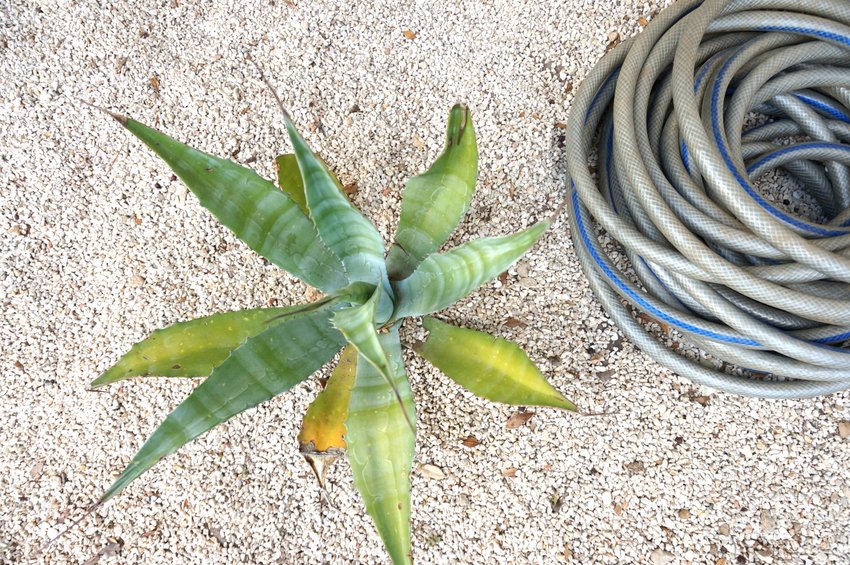
Tip #3: Remove weeds as needed.
I typically pull weeds a few times a year. Certain weeds that flare up after a rain may dry out and become less of a problem once the sun returns, so sometimes waiting to take care of the problem actually has its benefits!
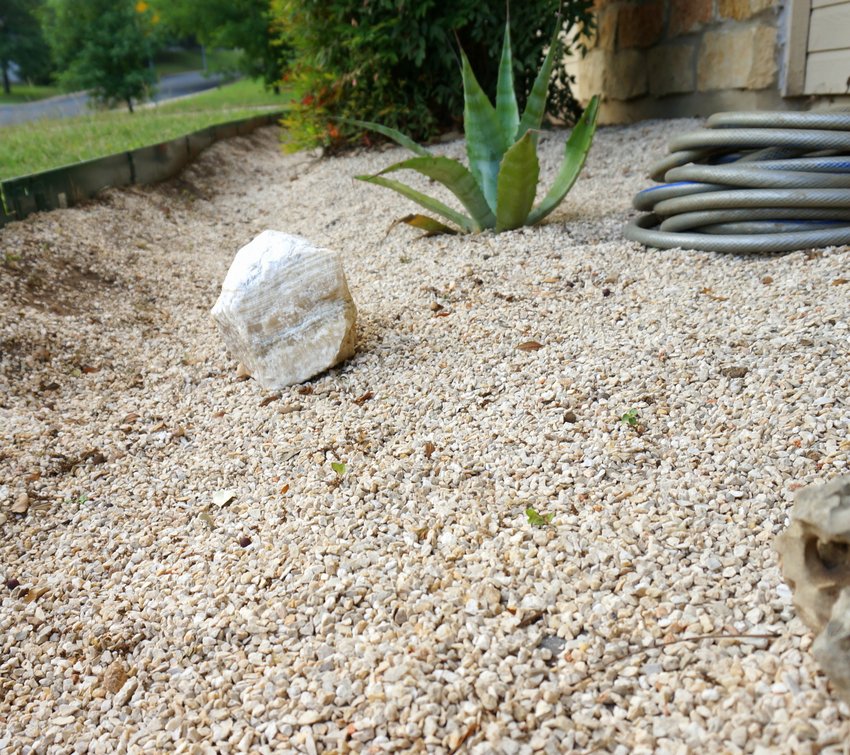
Tip #4: Even out gravel to avoid “bald spots” in the garden.
Adding extra gravel to the garden as needed can help smooth things out, as will raking the gravel in rows. Yes, at times you may need to purchase a bag or two of gravel to fill in the holes, but it’s well worth the trouble.
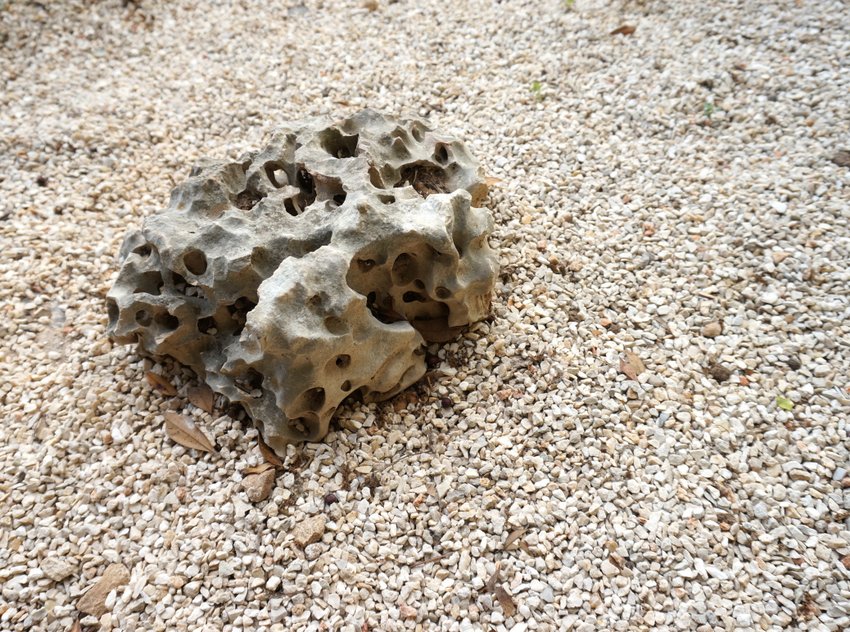
Tip #5: Continue beautifying your gravel garden with new rocks and plants.
It can be a pain to dig new holes for plants once the gravel is in place, but you can always add a potted plant or two, especially if you find a planter that matches the aesthetic of your garden. I enjoy “shopping my yard” for interesting rocks like the one above. It was hiding in a corner where nobody could appreciate it’s bold texture. The rock below was purchased for a reasonable price at a rock and mineral shop that also carries large samples for the yard.
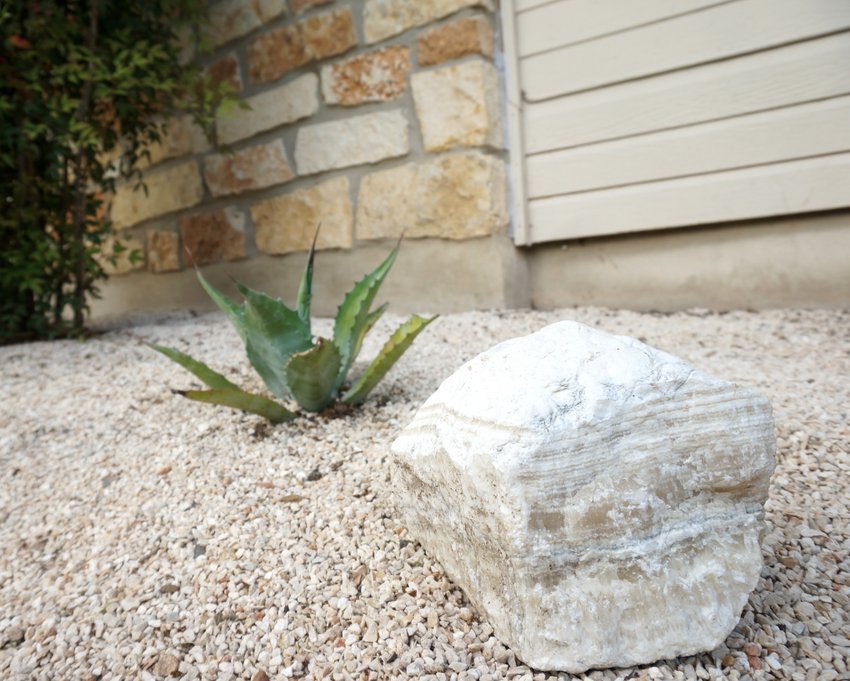
Troubleshooting…
Now we move on to those more complicated rock garden issues that can’t always be solved by an hour of work in the garden. I’m talking about plant problems and weed barrier questions. There are no easy answers here, but if you’re willing to take a closer look, you’re already one step ahead of the game!
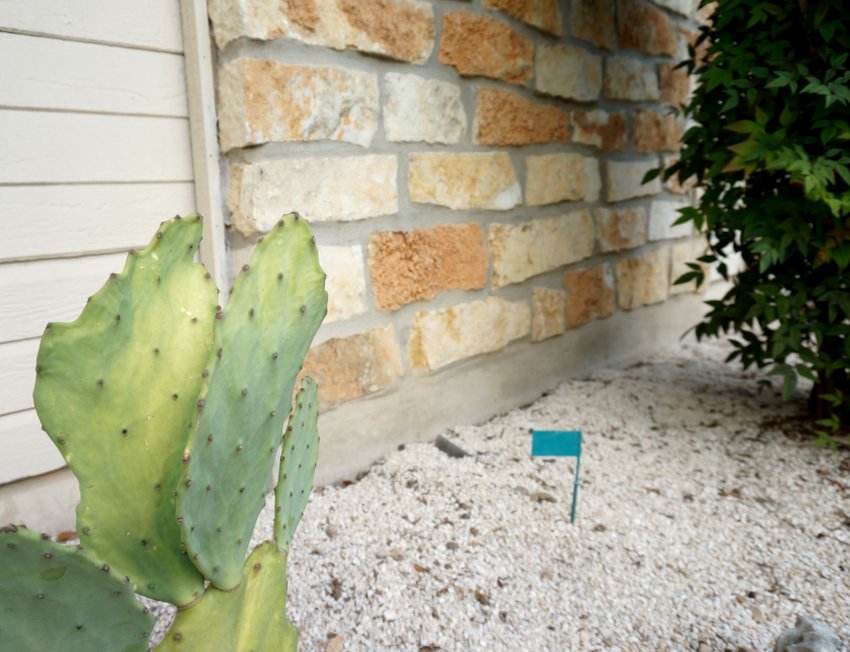
Let’s start with the obvious: How are your plants holding up? As mentioned earlier in the post, my plants are starting to yellow. This is not ideal. While too much sun might be an issue, the more likely possibility is too much water. We’ve had a LOT of rain this spring, so this is definitely a potential culprit. However, don’t hesitate to consider the amount of sunlight your plants are receiving. Did you factor sun levels into your decision about where to plant specific selections? Is it possible a plant or two may need to be moved?
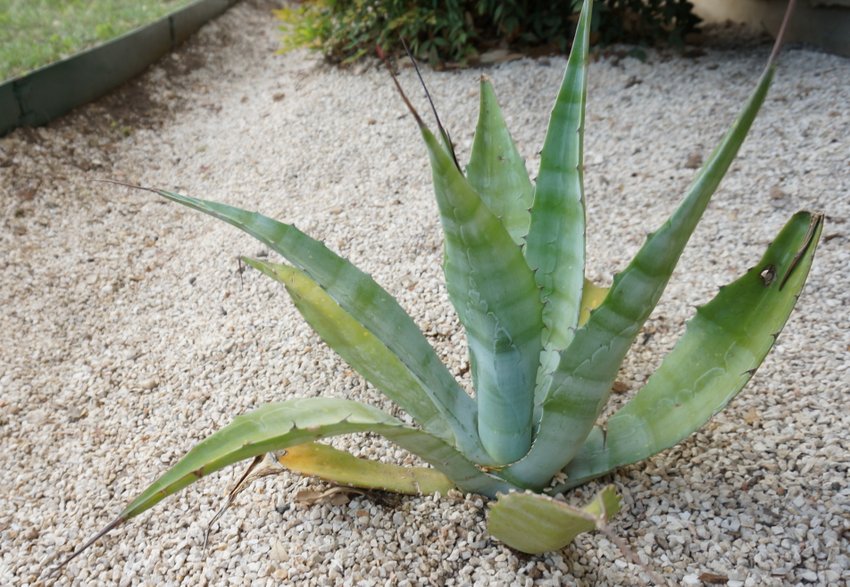
However, there’s also a possibility of weed barrier difficulties. As mentioned, some gardening enthusiasts strongly dislike weed barrier fabrics for a variety of reasons, including concerns about enough water reaching the plants (although most weed blocking cloth is permeable), as well as concerns about the plants thriving once they expand. Not to mention, if you do end up needing to move/remove a plant, the weed barrier makes things difficult, to say the least.
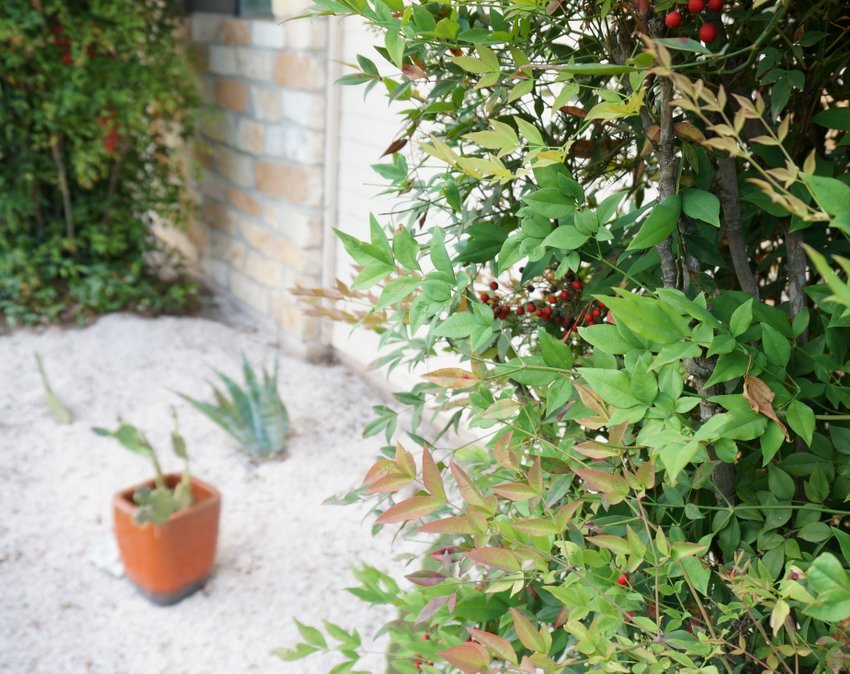
However, I really like the look of gravel, and I can honestly say that I’ve used gravel both with and without an effective weed barrier. For me, it’s been much less work to use a weed barrier cloth. I’ve had weeds in certain spots, but that beats having them throughout the garden. My plan: to continue to monitor the health of my plants (in regard to the watering and sunlight), and to remove the weed barrier if I suspect that it’s affecting the health of my plants. For now, it’s a waiting game…
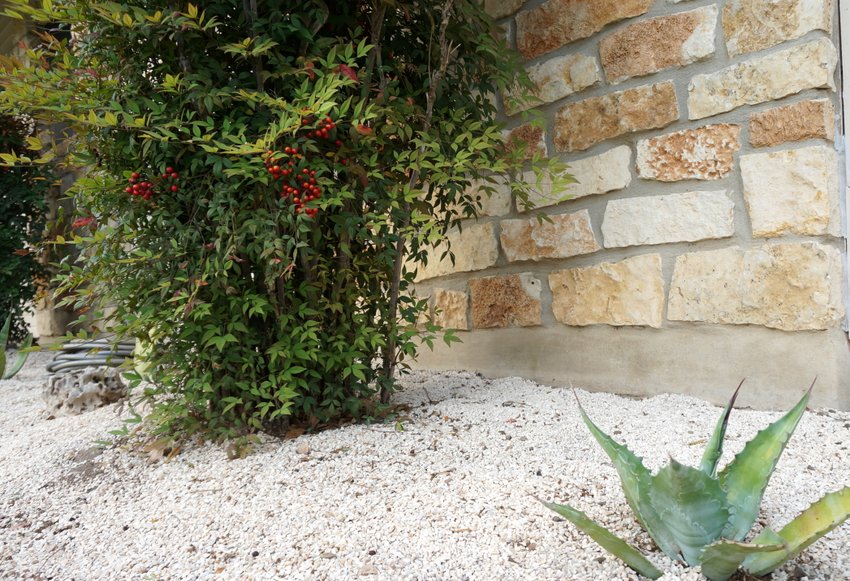
Creating a Gravel Garden That Thrives
As you can see, creating a healthy gravel garden is anything but simple! I thought the process was over and done after a 3-day project in my side yard a year ago, but since then, the garden has had to be redesigned, and the weed barrier cloth has been pulled back for procedures such as routine pest control. A garden enthusiast’s work is never done!
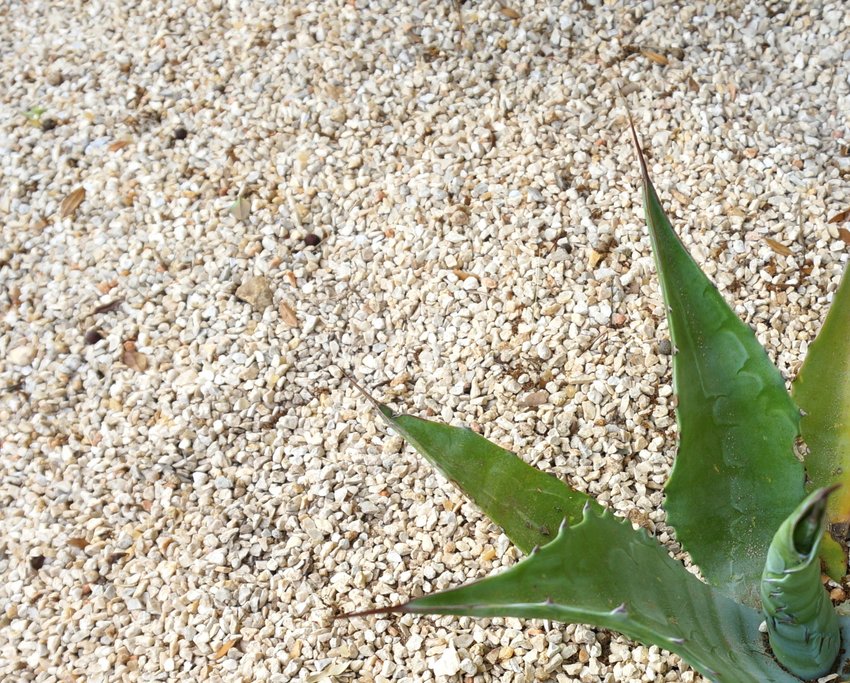
While your garden (and life circumstances) may take on a life of their own, remember that there are things you can do to help your garden thrive, from regular watering, weeding and leaf removal to the more difficult task of troubleshooting solutions to larger problems, such as how the location of your plants affects their health.
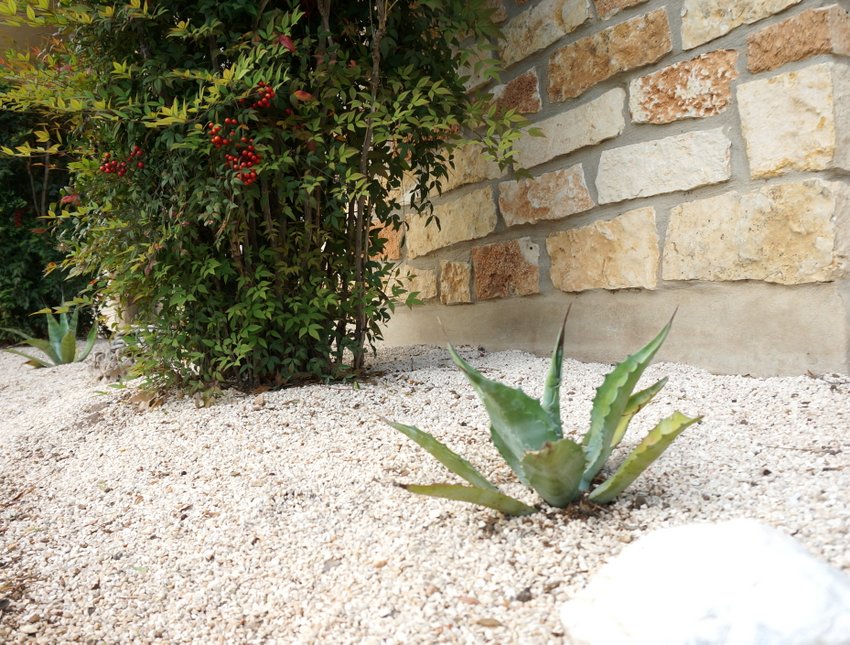
Even with all of the work involved, I have to say that I still smile each time I walk past my gravel garden and see the clean look of the sculptural plants set against the background of fine limestone gravel. Yep, it’s worth it!




